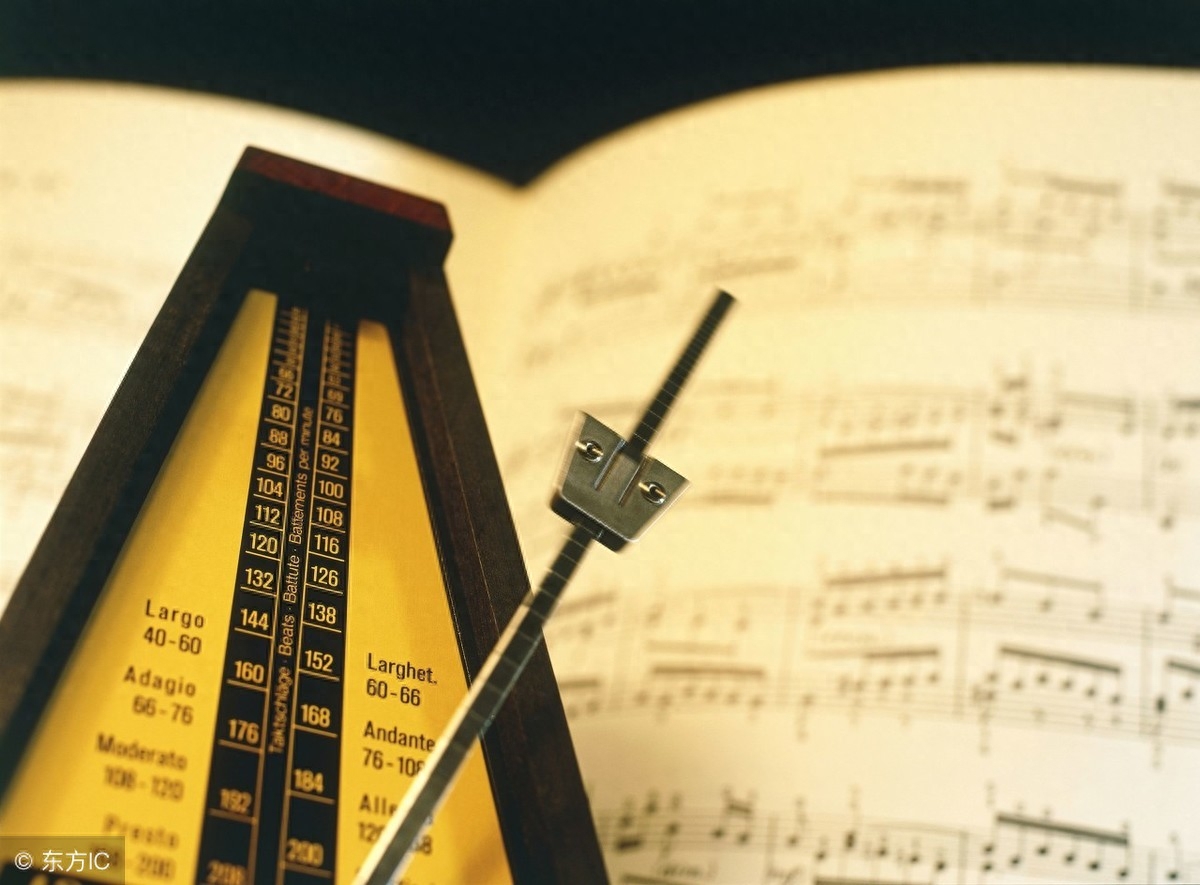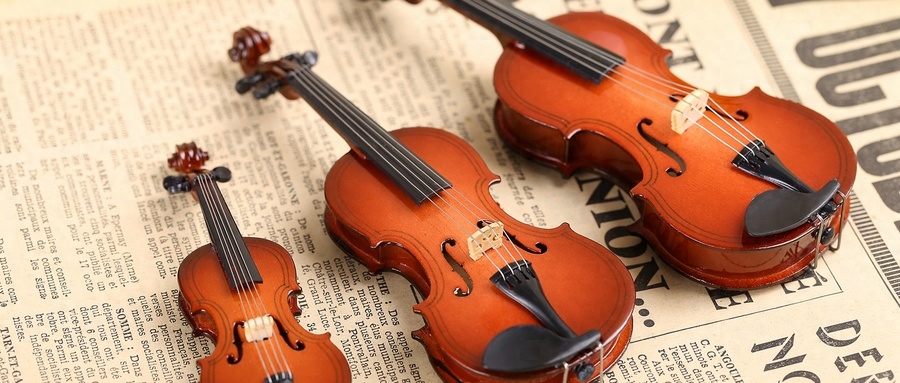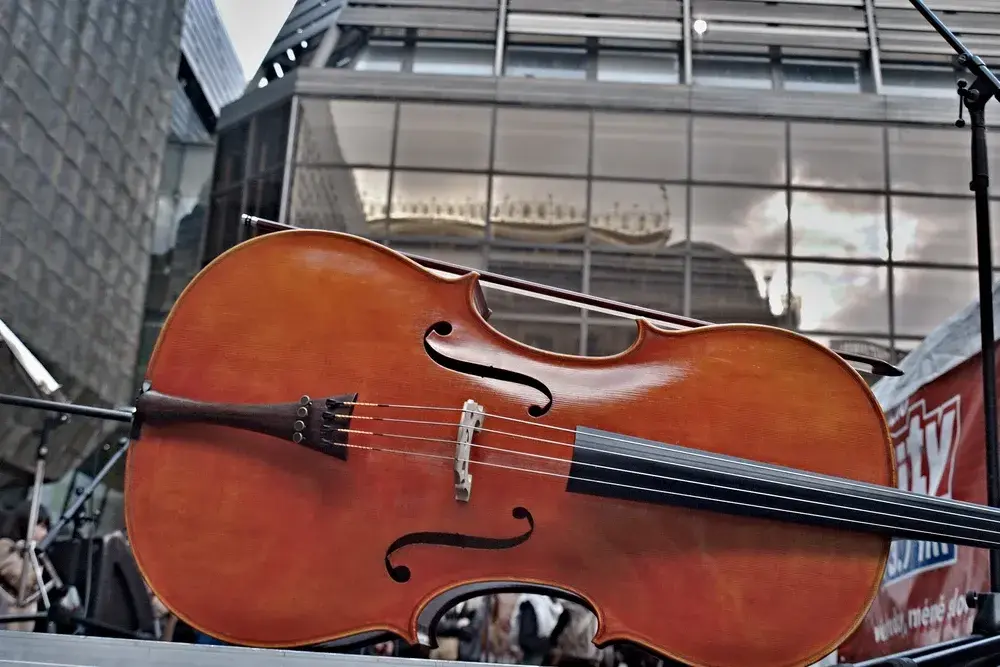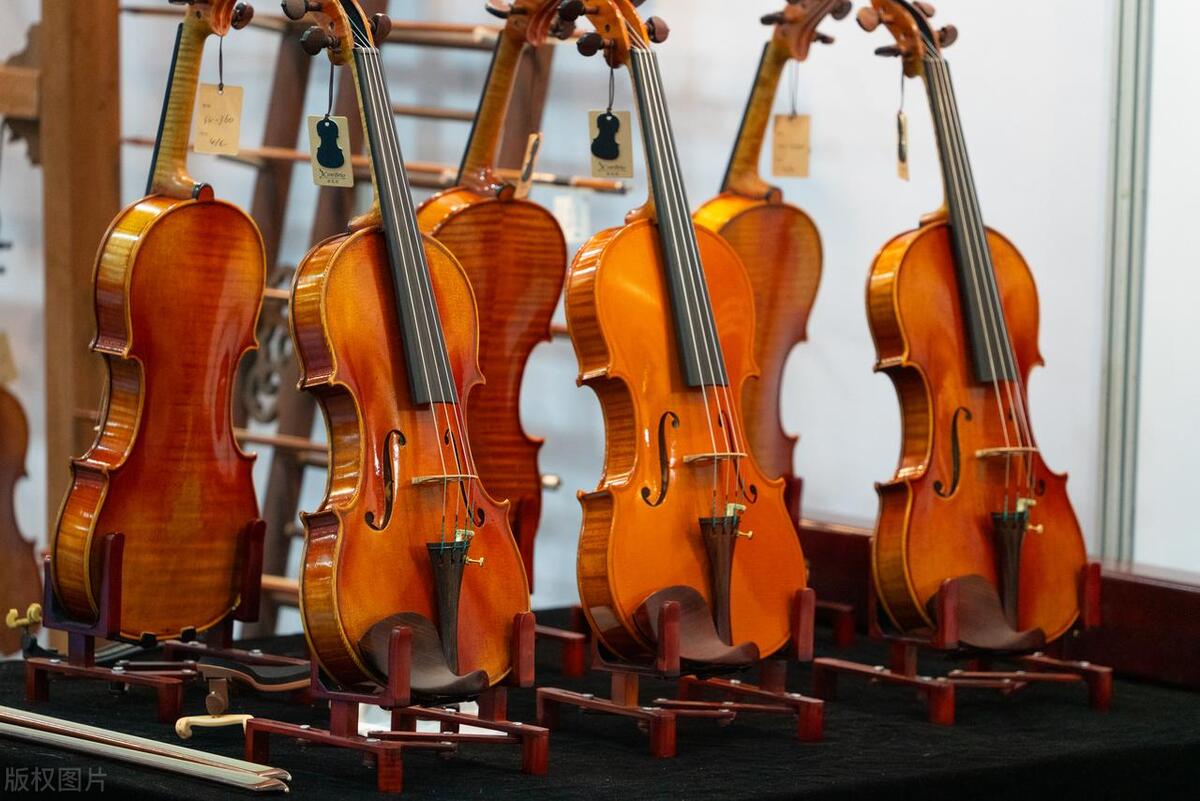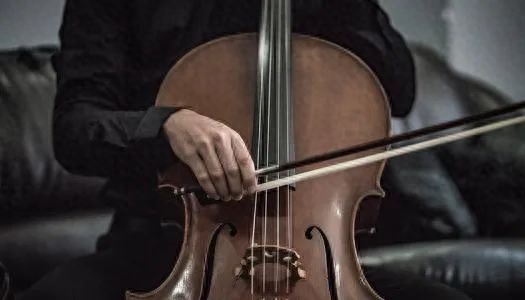自幼学习小提琴的祖克曼为何要学中提琴?
A Conversation With Violinst Pinchas Zukerman
对话祖克曼(一)谷宇飞专访祖克曼
The story of Pinchas Zukerman reads almost like a fairy-tale – a young child in Israel begins to study the violin, gets "discovered" by Isaac Stern and Pablo Casals a few years later, and moves to the United States to study under the great pedagogue, Ivan Galamian. He gives his New York debut the following year; by age 18, he wins the prestigious Leventritt Competition, and a star is born. Only there is considerably more.
祖克曼的人生故事读起来犹如童话:一个以色列男孩自幼学习小提琴,几年后他被艾萨克·斯特恩和帕布罗·卡萨尔斯“发掘”,之后去往美国,在伟大的教育家伊凡·加拉米安的指导下学习。次年,他便于纽约首演;18岁时,祖克曼在远近闻名的列文垂特大赛中摘桂,一颗明星就此诞世。而这却远不是这个童话故事的尾声。

Pinchas Zukerman is also an internationally renowned violist. Moreover, in his early 20's, he succumbed to the "conducting bug," beginning with the English Chamber Orchestra. He later became music director of the St. Paul Chamber Orchestra (1980-87), enjoyed stints in various capacities at Dallas and Baltimore, and became music director of Canada's National Arts Centre Orchestra (NACO) in 1999, in which capacity he still serves. In addition, he has been the principal guest conductor of the Royal Philharmonic since 2009.
作为中提琴演奏家的祖克曼同样名满天下。不仅如此,在二十出头的年岁,他又化身“指挥家兔八哥”("conducting bug"),以英国室内乐团(English Chamber Orchestra)为起点。其后,他成为了圣保罗室内交响乐团(St. Paul Chamber Orchestra)的音乐总监(1980-87年间),在达拉斯和巴尔的摩五花八门的职位上享受着他的任期,1999年祖克曼成为了加拿大国家艺术中心交响乐团(NACO)的音乐总监,这份职务他历任至今。除此外,自2009年起他还作为首席客座指挥执棒英国皇家爱乐乐团。(译注:祖克曼已于2015年卸任NACO音乐总监,但出任名誉指挥。 )

祖克曼指挥NACO
Why stop there? Like most musicians, Zukerman believes in the importance of chamber music, and he formed the Zukerman ChamberPlayers in 2003. He also teaches at the Manhattan School of Music.
指挥家的生涯再次画上句点,原因何在?和大多数音乐家一样,祖克曼对室内乐的重要性深信不疑,于是他在2003年成立了祖克曼室内乐演奏家(Zukerman ChamberPlayers)乐团。在曼哈顿音乐学院你也能找到他传道授业的身影。

Zukerman Chamber Players 2013年 曾来过北京
Our paths had actually crossed some years ago. I reviewed Pinchas Zukerman twice during my stint as critic for The New Haven Register. Although the texts are "lost" – these were pre-Internet days! – I am certain I littered my prose with superlatives both times. Thus, it was with nothing but fond memories and the highest artistic respect that I began our conversation.
多年前,我俩曾有过交集。当我还在为《纽黑文记事报》撰写乐评时,我曾两次评论过皮恩卡斯·祖克曼。尽管那些文章已经“丢了”——那可是没有互联网的年代!——我很确信自己两次都把写满溢美之词的文章乱扔弄没了。也因此,前事皆作古,我仅带着美好的回忆以及对艺术最崇高的敬意,开始了我们的对谈。

THIRSTY: You've enjoyed success on the viola, which is somewhat unusual for a violinist of your stature. What is it like switching between the two instruments, which are similar, to be sure, but different with respect to fingerboard technique and even more so with respect to bowing? Do you encourage conservatory-level students to perform on more than one instrument, or is that something that can work to their detriment developmentally? Also, precisely when did you get involved with the viola?
THIRSTY:你在中提琴事业上收获的成功,在如此修为的小提琴演奏家里并不多见。两种乐器间存在相似之处无疑,但就指板技术而言,仍有不同,这种差异性在弓法上体现的更为显著,那么在二者间切换是什么样的体验呢?你会鼓励音乐学院的学生演奏不止一种乐器吗?还是说,从演奏技艺发展的角度看,这于他们有害?还有,你究竟是何时开始涉足中提琴的呢?
PINCHAS ZUKERMAN: To answer the earlier question, I strongly encourage violinists to play the viola, and violists to play the violin! In fact, we've switched a few fiddle players to viola during the course of study, and they're doing extremely well. Schmuel Katz is one who comes to mind right away. He is principal viola at the Mostly Mozart Festival, and he also plays with the Philadelphia and Metropolitan Opera orchestras. Also, Tali Kravitz, who has gone back to Israel, used to be a violinist exclusively, but she switched to viola and now teaches that instrument as well.
祖克曼:回答你之前的问题,我强烈建议小提琴手去演奏中提琴,中提琴手去演奏小提琴!事实上,在课业中我们曾让几位小提琴手转而演奏中提琴,而他们做的非常棒。我脑中闪过的第一个人就是叔默尔·卡茨。他是莫扎特音乐节上的中提琴首席,他也任职于费城歌剧院以及大都会歌剧院的交响乐团。还有塔里·克拉维茨,她已经回以色列了,原来只演奏小提琴,但如今她转而演奏中提琴并教授这门乐器。

To address the larger picture, though, I think it's a very important concept to keep in mind. If we notice someone struggling on the a little too much, that student may benefit from a switch to the viola. Remarkably enough, the violin may become easier later on if the student switches back – as they sometimes do. However, we may also encounter a similar problem the other way. Sometimes, when they're struggling on the viola, the problem involves coordination on the larger frame. The violin is smaller, and provides an opportunity to move around more rapidly and easily. After a while, if they return to the viola, they find they are better able to handle the same technical challenges. It's a little like driving a big car and/or a small car. The differences arise not so much on the straight road as when one takes the curves.
不过,着眼于更大的图景,我认为这是一个值得采纳的重要理念。如果我们注意到有学生在小提琴上过于纠结,那么他或许可以得益于中提琴的训练。令人印象深刻的是,当学生重新回归小提琴以后,他会发现原来的问题变简单了——这时有发生。然而,在中提琴上,我们也会碰到相似的问题。有时,中提琴演奏者会纠结如何与更大尺寸的琴身相协调。小提琴更小巧,小巧的琴身为乐手提供了更迅速、更轻松的“跑动”环境。一段时间的练习以后,当他们回归中提琴时,便会发现原来的技术难点如今可以更好的掌控了。这有点类似开大型车与开小型车的差别。这种差别在笔直的大路上表现的远没有在曲折的弯道上明显。
祖克曼演绎中提琴
As far as the music goes, I feel there is no question whatsoever: everyone who plays the violin should also play the viola, and vice versa, because it's wonderful to be on both sides of the score, so to speak. It's certainly valuable to learn the alto clef as well, not only in theory, but also in practice. Pianists are taught to play two clefs immediately, so why shouldn't violinists learn a second clef, also?
就音乐而言,我觉得这毫无问题:每一个小提琴乐手都应该学习演奏中提琴,反之亦然,因为,可以这么说,能在谱表两端都有所作为是很棒的一件事。同样,学习中音谱表的价值也是毋庸置疑的,不仅在理论上,在演奏中也是如此。钢琴家们习琴从来是即刻识出上下两行乐谱,既然如此,为什么小提琴家就不该多学一行呢?
I started playing the viola when I was 15, at Meadowmount [the Meadowmount School of Music, which hosts a prestigious summer program for talented string players and pianists – Ed.]. Josef Gingold encouraged me to try the instrument, and the rest was history.
我于15岁起在梅多蒙特学习中提琴(指梅多蒙特音乐学院,该院设有一闻名的夏季项目,专为有天赋的钢琴家和小提琴家开设)。约瑟夫·吉格德鼓励我尝试这门乐器,再之后就都是往事了。

Josef Gingold and Joshua Bell
Actually, a number of violinists performed on the viola as well. David Oistrakh was a fabulous violist, and I heard him on that instrument on numerous occasions, including once at Carnegie Hall, when he and his son, Igor, performed Mozart's Symphonie Concertante magnificently. Later, I got to hear Yehudi Menuhin play the same work, and while I never heard either of them program sonatas and concertos, I suspect they might have at some point.
实际上,不少小提琴家都会演奏中提琴。大卫·奥伊斯特拉赫就是一位杰出的中提琴演奏家,我在不少场合都听过他的演奏,包括一次在卡内基音乐厅,他和他的儿子——伊戈尔——将莫扎特的交响协奏曲合作的恢弘壮丽。这之后,我也听耶胡迪·梅纽因演奏过同一部作品,虽然我从没听过他俩在音乐会里安排奏鸣曲和协奏曲,不过我猜这对他们而言只是时间问题。

奥伊斯特拉赫父子与梅纽因
For quite a while, I played both instruments for repertoire purposes as well as my personal interest, notably with an all-Brahms sequence. For two or three seasons, [pianist] Marc Niekrug and I played two all-Brahms recitals – all the sonatas for both violin and viola – over the course of two nights.
在很长一段时间内,我演奏乐器既为充实曲目也为我的个人喜好,尤其是勃拉姆斯的全部作品。出于三两个由头,(钢琴家)马克·尼克鲁格与我合作了两场全勃拉姆斯音乐会——演奏所有的小提琴和中提琴奏鸣曲——音乐会办了两夜。

By the way, we also performed the ten Beethoven violin sonatas in three nights. However, while it easy enough to program all-French music or all-German music, there aren't that many composers with whom we can fill the programs exclusively. One might also try it with Mozart, Schumann, and Bartok . . .
随口一提,我们曾花三晚演奏了贝多芬的十部小提琴奏鸣曲。尽管,编排全法国曲目或是全德国曲目的音乐会绝非难事,但若要安排单一作曲家的作品音乐会的话,我们并没有那么多作曲家可供选择。或许可以试一试莫扎特、舒曼和巴托克……

THIRSTY: Perhaps Hindemith!
THIRSTY:也可以是亨德密特!
PINCHAS ZUKERMAN:But you see, there really aren't that many. Yet in a way, the usual "balanced" programs are sometimes more difficult on the listener. When they go from Mozart to Respighi . . . well, let's just say I might not be all that keen on trying that, especially these days, given the level of music appreciation we sometimes encounter in the concert halls.
祖克曼:但是你看,真的没有那么多可选。在某种程度上,一般意义上“平衡”(多元)的曲目安排有时对听众而言反而更有难度。当他们从莫扎特跳到雷斯庇基时……好吧,我想说的只是我并不热衷于那种尝试,特别是如今,考虑到我们有时会在音乐厅里碰到的那种(糟糕的)欣赏水平的时候。

THIRSTY: Programming is an art in and of itself!
THIRSTY:曲目安排本身也是一门艺术!
PINCHAS ZUKERMAN: That's true, but in the old days, things were different. I remember I heard Menuhin once – in the first half, he played twelve of the Paganini Caprices, which were fantastic, and then in the second half, he did the Bach Sonata in d minor [which ends in the very famous Chaconne – ed.]. This was a terrific program in my opinion. I think of it as a painter's palette – after twelve pictures, we should have a pretty good idea about his palette! We can really learn about Paganini's craft over the course of twelve compositions, and the same is true of Bach from such a monumental sonata, so that's good programming. When one plays all-classical in one half and all-virtuosic in the other, that is also good programming, because the listener gains a greater understanding of both the instrument and the performer.
祖克曼:确实如此,但是放在过去,事情是不一样的。我记得我曾听过一次梅纽因的音乐会——在上半场,他演奏了帕格尼尼(二十四首)随想曲中的十二首,都很棒;在下半场,他演奏了巴赫的《d小调奏鸣曲》(结束在那段著名的恰空里)。在我看来这便是一例优秀的曲目安排。我把它想象成画家的调色盘,12幅画过后,我们理应对他的成色知根知底!在12首随想曲中,我们确实可以真切的学习帕格尼尼的匠心,对巴赫亦然,在如此不朽的奏鸣曲中,因此,这种曲目安排是优秀的。当演奏家选择演奏半场全古典作品,半场全炫技作品时,却也不失为优秀的编排,因为这样安排曲目可以让听众从乐器与乐手两个方面都获得更好的理解。
Tying this back to your question, though, I think it's another reason for violinists to study the viola (and vice versa). I was able to do an all-Schubert program, also, in which I played the "Arpeggione" Sonata [actually written for an obscure, now "extinct" instrument, the arpeggione, but most often performed on either cello or viola (though sometimes on bass, clarinet, guitar, or other instruments) – ed.], and on those evenings, we gave the listener a better understanding of the "journey" of Schubert, just as we did for the "journey" of Brahms.
绕回你的问题,我认为让小提琴手学习中提琴(反之亦然)的理由还有一条。同时掌握两种乐器可以让我有能力安排全舒伯特曲目的音乐会,在这类音乐会中我会演奏(舒伯特的)《阿佩乔尼琴奏鸣曲》[本是写给一种小众的,现已“消失”的乐器,阿佩乔尼琴的,这首作品时常由大提琴或是中提琴演奏(尽管有时也会在低音提琴,单簧管,吉他和其他乐器上演奏)],在那些夜晚,我们可以给予听众更好的理解,理解舒伯特的“旅程”,正如我们为勃拉姆斯的“旅程”所做的一样。
THIRSTY: That's quite interesting! Sarah Darling, who recorded my violin sonata, is actually a violist. My composition is in the baroque style, and she is a violist who got moved over to baroque violin. It was quite enjoyable to work with her, and I can certainly appreciate everything you've said about playing both instruments. There was a time when this was discouraged, but I'm glad to see the pendulum has swung the other way.
THIRSTY:这很有趣!萨拉·达林,录制了我的小提琴奏鸣曲,实际上她是一位中提琴演奏家。我的作品是巴洛克风格的,她是一名转攻巴洛克小提琴的原中提琴手。和她一起工作非常享受,而我无疑赞同你关于学习两种乐器的全部观点。曾有一段时间,器乐双修是不被提倡的,但我幸得见到钟摆不再是一边倒了。

PINCHAS ZUKERMAN: I knew some great violists who started on the fiddle. Walter Trampler performed exclusively on the viola, but he told me that once a month or so, he would practice several hours on the violin, just to rekindle the small motor coordinations. I think this is good, and encourage people to play both.
祖克曼:我认识一些伟大的中提琴演奏家,而他们是从小提琴开始的。瓦尔特·特拉普勒只演奏中提琴,但他曾告诉我,一个月左右,他总会练几个小时的小提琴,只是为了重新激活自己的精细运动协调能力。我认为这是值得称道的,也能鼓励人们同时学习演奏两种乐器。 (未完待续,明日继续更新)
版权声明:本文摘自音乐文献编译组,译文 刘昕,仅供参考、交流、学习等非商业目的。转载的稿件版权归原作者和机构所有,如有侵权,请联系我们删除,谢谢合作!
[注:本文部分图片来自互联网!未经授权,不得转载!每天跟着我们读更多的书]
互推传媒文章转载自第三方或本站原创生产,如需转载,请联系版权方授权,如有内容如侵犯了你的权益,请联系我们进行删除!
如若转载,请注明出处:http://www.hfwlcm.com/info/254566.html


